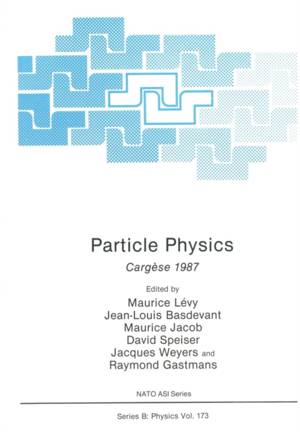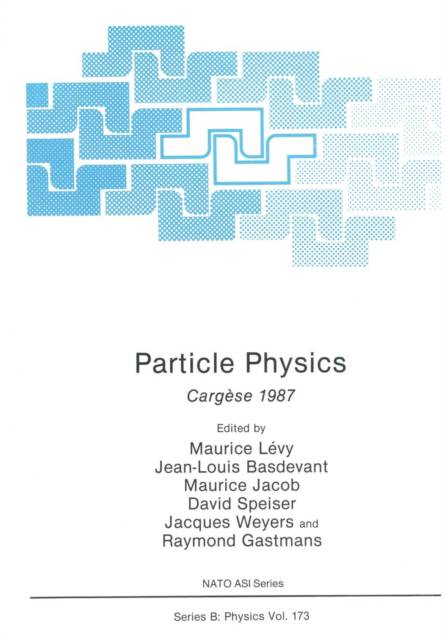
- Afhalen na 1 uur in een winkel met voorraad
- Gratis thuislevering in België vanaf € 30
- Ruim aanbod met 7 miljoen producten
- Afhalen na 1 uur in een winkel met voorraad
- Gratis thuislevering in België vanaf € 30
- Ruim aanbod met 7 miljoen producten
Zoeken
€ 76,95
+ 153 punten
Uitvoering
Omschrijving
The 1987 Cargese Summer Institute on Partiele Physies was organized by the Universite Pierre et Marie Curie, Paris (M. LEVY and J.-L. BASDEVANT), CERN (M. JACOB), the Universite Catholique de Louvain (D. SPEISER and J. WEYERS), and the Katholieke Universiteit te Leuven (R. GASTHANS), whieh, sinee 1975, have joined their efforts and worked in eommon. It was the 25th summer institute held at Cargese and the ninth one organized by the two institutes of theoretieal physics at Leuven and Louvain-la-Neuve. The 1987 school was centered around two main themes: the re cent developments in string theory and the physics of high energy colliders. As the standard model of the fundamental interaetions has repeatedly proved to be suecessful in explaining the experimental findings in par- tiele physies, more attention was given in this school to possible new features arising from string inspired models. This led us to inelude in the program aseries of lectures devoted to string theory per se. They eovered the more mathematical aspects of the theory as weIl as the phenomenological implications. The second theme concerns high energy collider physics and was meant to prepare young physicists for the future experimental results to be expected from the pp and e]e- colliders. It brought theorists and ex- perimentalists actively together in their search for a better understand- ing of the high energy phenomena.
Specificaties
Betrokkenen
- Auteur(s):
- Uitgeverij:
Inhoud
- Aantal bladzijden:
- 674
- Taal:
- Engels
- Reeks:
- Reeksnummer:
- nr. 173
Eigenschappen
- Productcode (EAN):
- 9781461282747
- Verschijningsdatum:
- 28/10/2011
- Uitvoering:
- Paperback
- Formaat:
- Trade paperback (VS)
- Afmetingen:
- 170 mm x 244 mm
- Gewicht:
- 1075 g

Alleen bij Standaard Boekhandel
+ 153 punten op je klantenkaart van Standaard Boekhandel
Beoordelingen
We publiceren alleen reviews die voldoen aan de voorwaarden voor reviews. Bekijk onze voorwaarden voor reviews.











